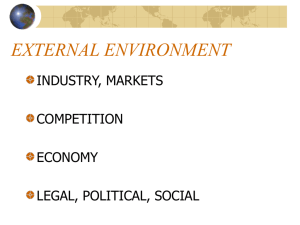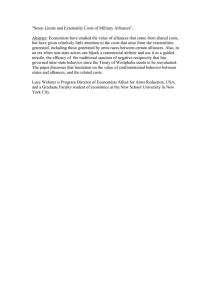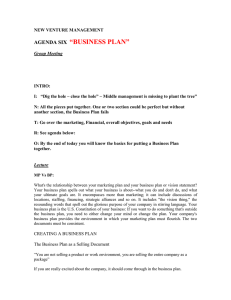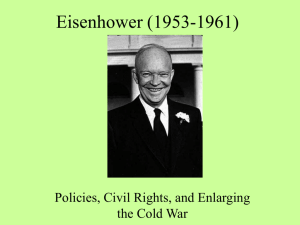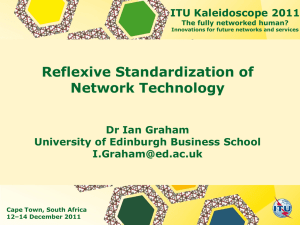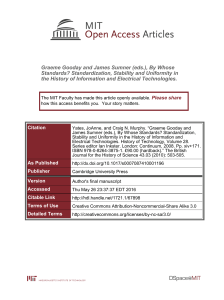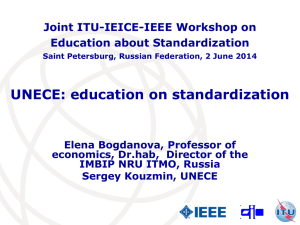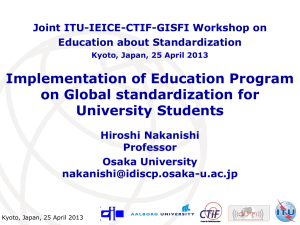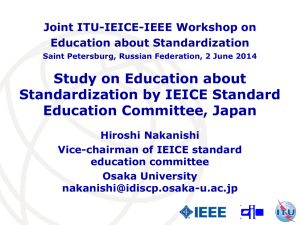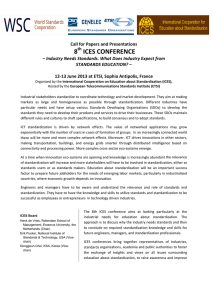9/5/2008 People and organizations willing and able to buy Value orientation
advertisement
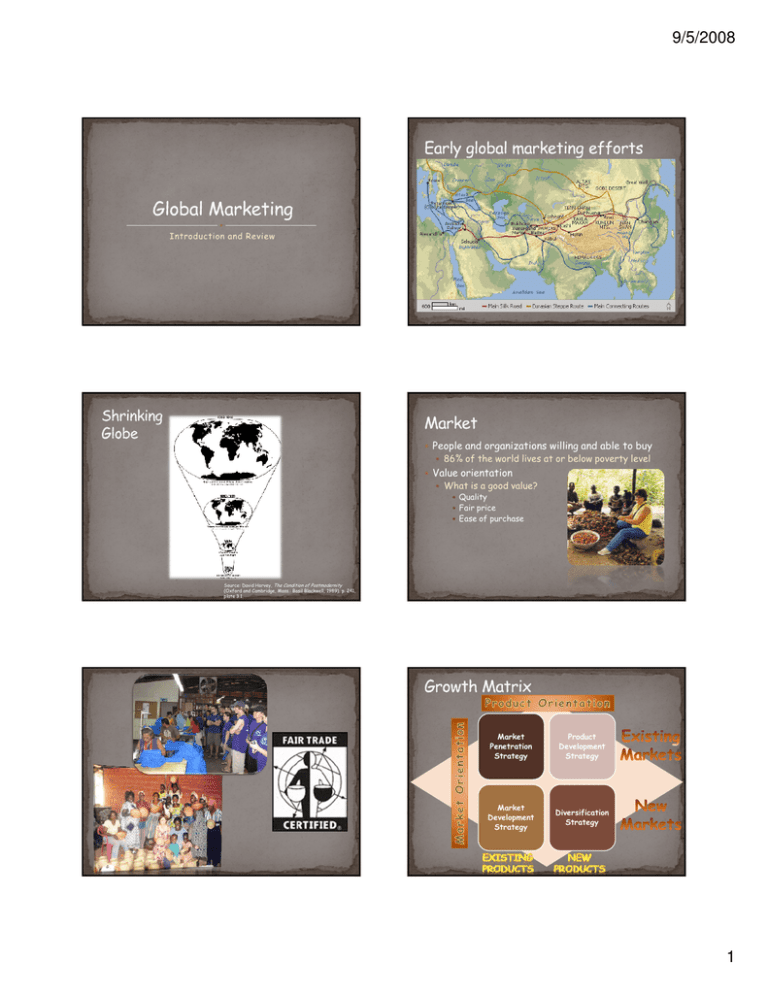
9/5/2008 Introduction and Review People and organizations willing and able to buy 86% of the world lives at or below poverty level Value orientation What is a good value? Quality Fair price Ease of purchase Source: David Harvey, The Condition of Postmodernity (Oxford and Cambridge, Mass.: Basil Blackwell, 1989), p. 241, plate 3.1. Market Penetration Strategy Product Development Strategy Market Development Strategy Diversification Strategy 1 9/5/2008 Global Industry Single-Country gained by integrating and leveraging operations on a global scale Five forces analysis can assist a company in formulating the appropriate strategy to gain a competitive advantage • Target Market • Marketing Mix • Product • Price • Place • Promotion Global Competitive advantage • Global Market Participation • Market Mix Development • Adaptation or standardization in all four “Ps” • Concentration • Coordination • Integration of competitive moves Kenichi Ohmae Global companies understand the balance of standardization and customization required in the world’s marketplace. CREATIVITY is thinking up new things. INNOVATION is doing new things. Theodore Levitt Subaru 360 and Yugo Cars Think Globally…. Act Locally 2 9/5/2008 Centralized management Opposite of Ethnocentric Standardized product Often seen as MULTI-Domestic Only sees similarities and Very localized approach ignores differences Views and decisions come from Domestic or Home country Belief in home-country superiority Aspects of the four Ps adapted for local market Great usage of local talent Companies may not build great overall brand equity Some dis-organization or mis-communication challenges No experience curve benefits Important geographic unit Sales outside of home country as percentage of total sales Truly global or transnational Integrated strategy Global market and based on regional not national market preferences Often align with trade alliances of political entities global supply chain networks Total world view Ratio of employees outside of home country as a percentage of total employment Assets outside home country in relation to total assets Trade alliances Common currency Global view Transportation developments Communication technology Development costs New markets Post Soviet Union Access to resources Peace 3 9/5/2008 A tale of two nations Culture-Management Styles Opposition “Globalphobia” National Controls –trade barriers War Currency values March 7, 1957 1957 Independence from Great End of the Korean Conflict Britain through peaceful negotiations and devastation from war 4
